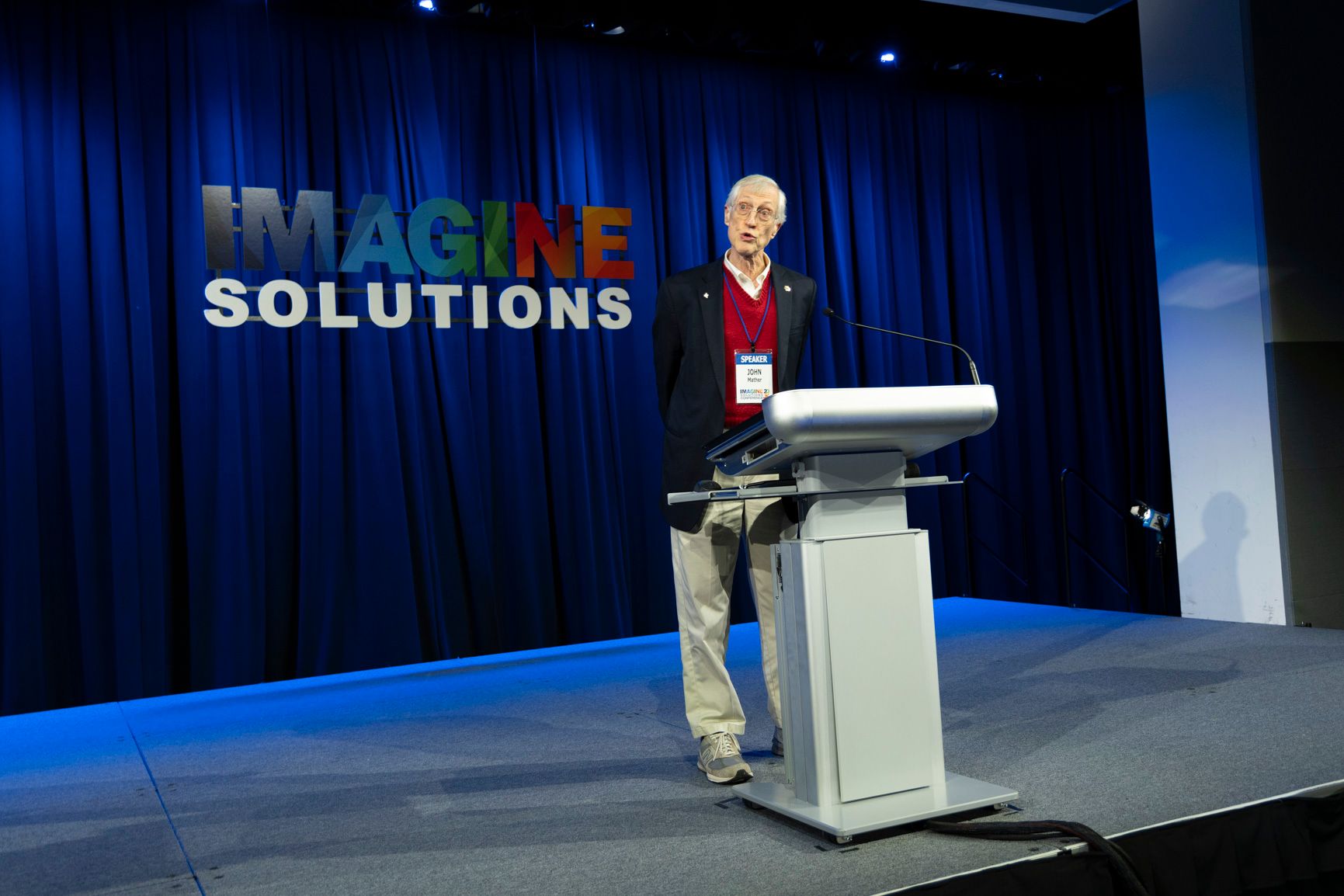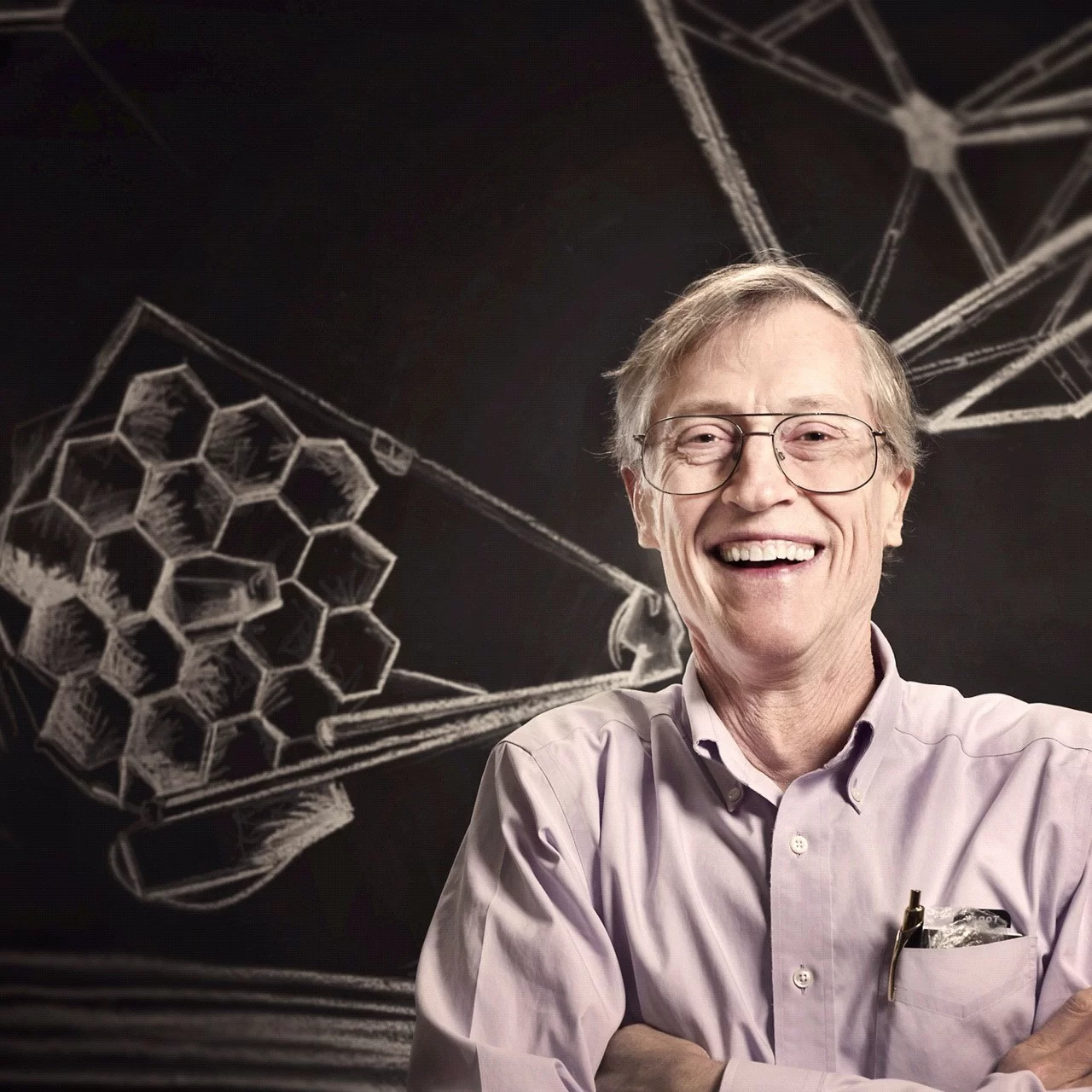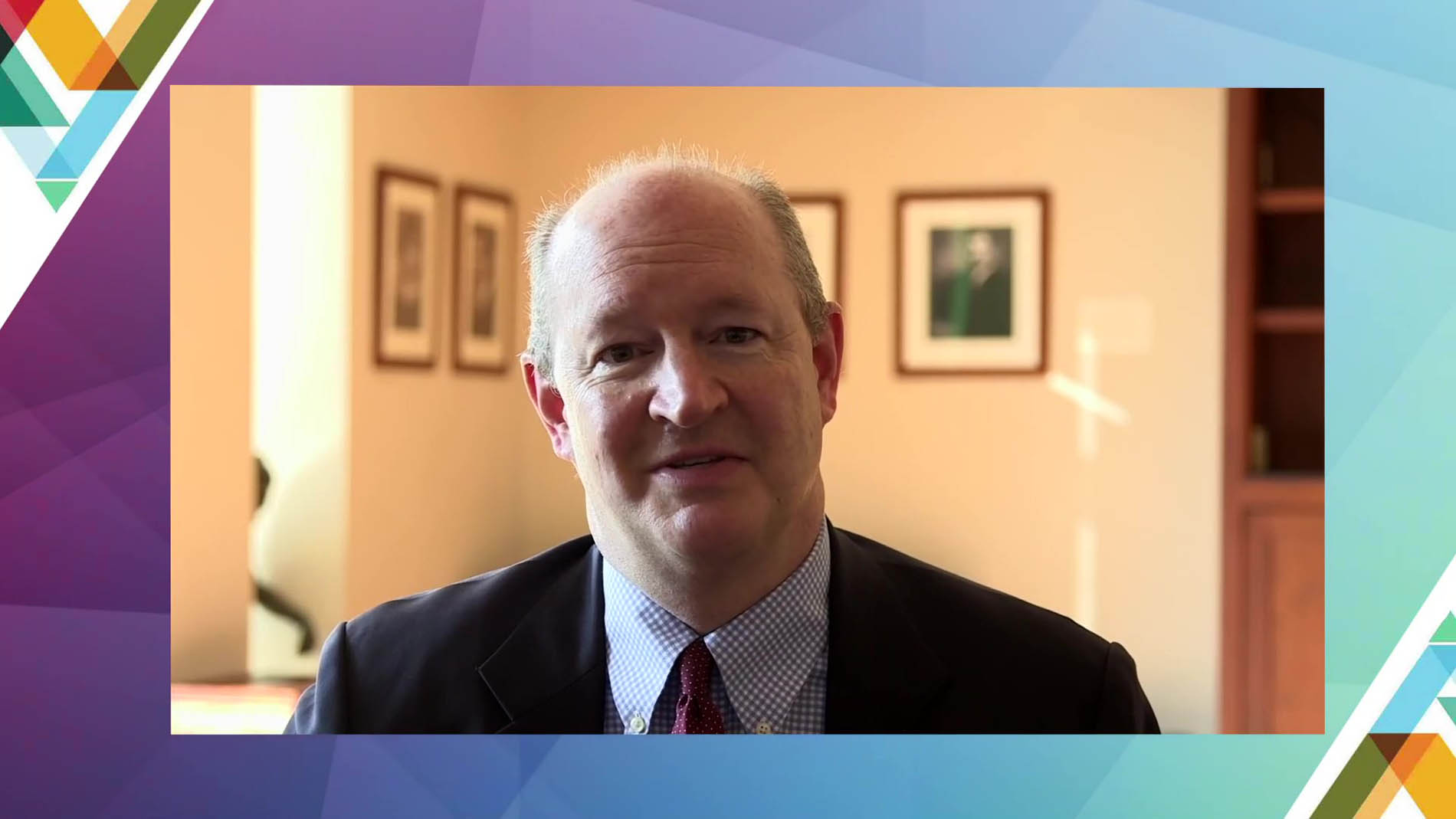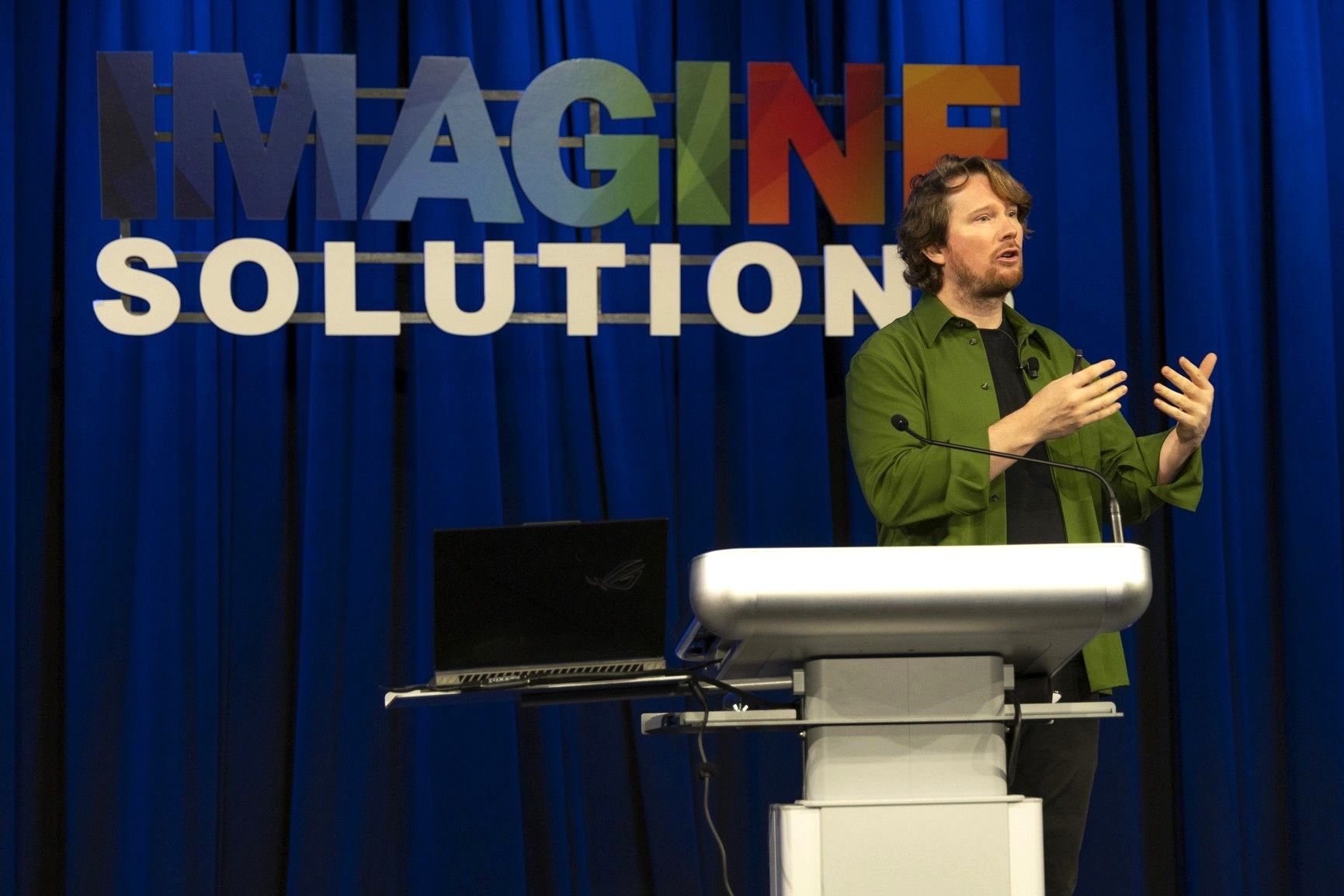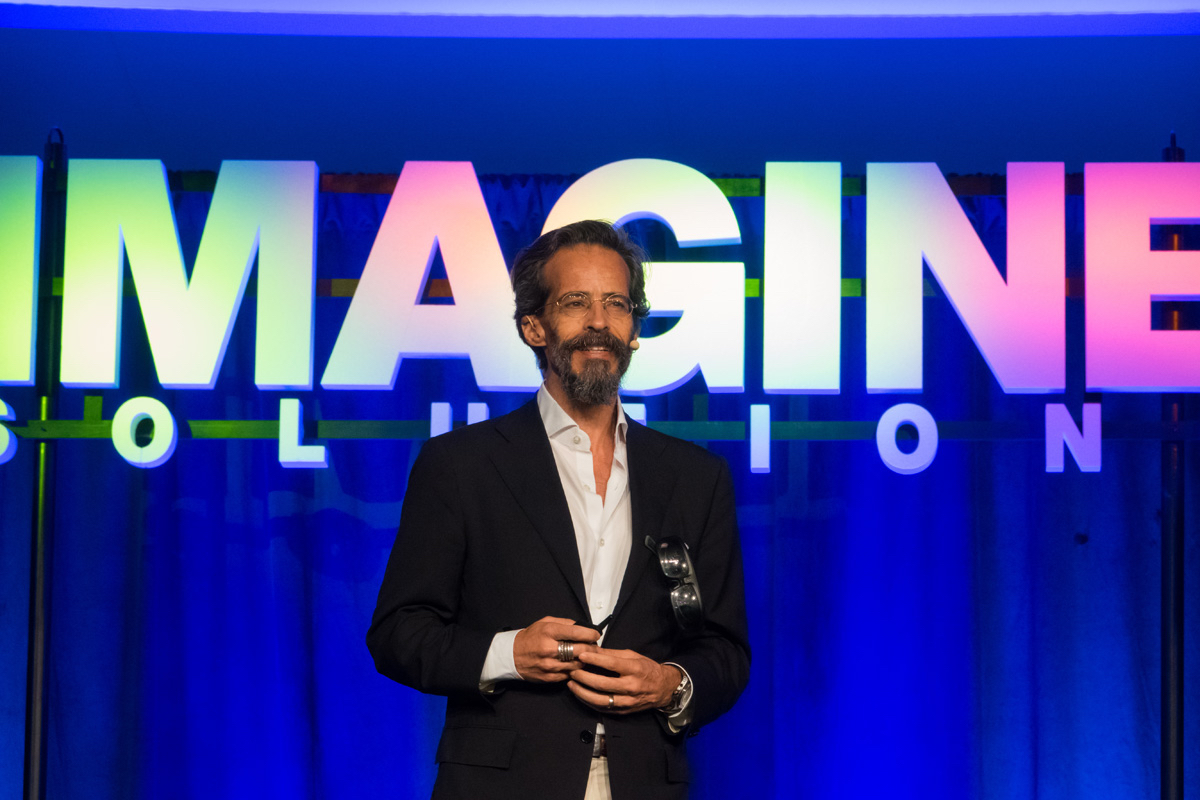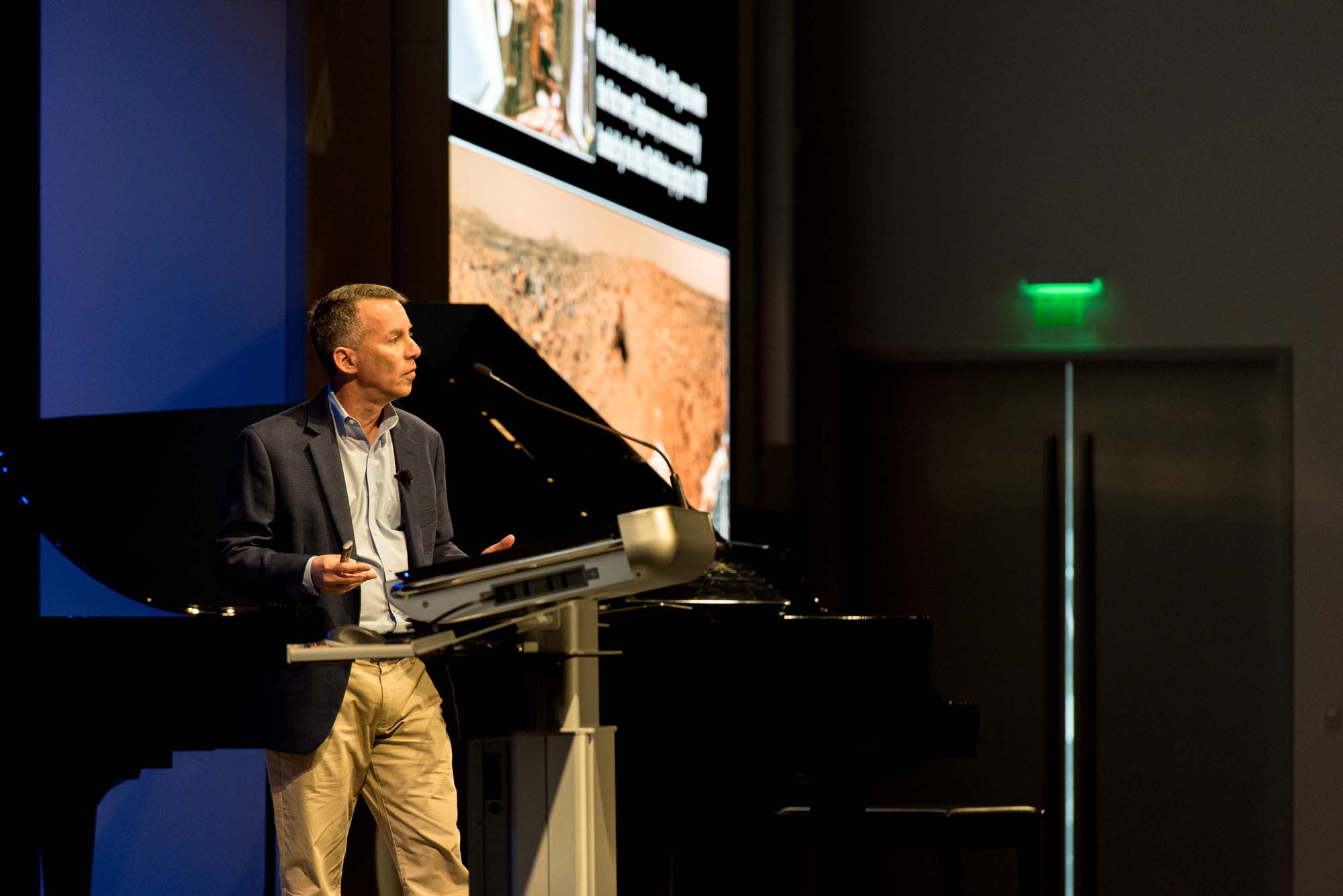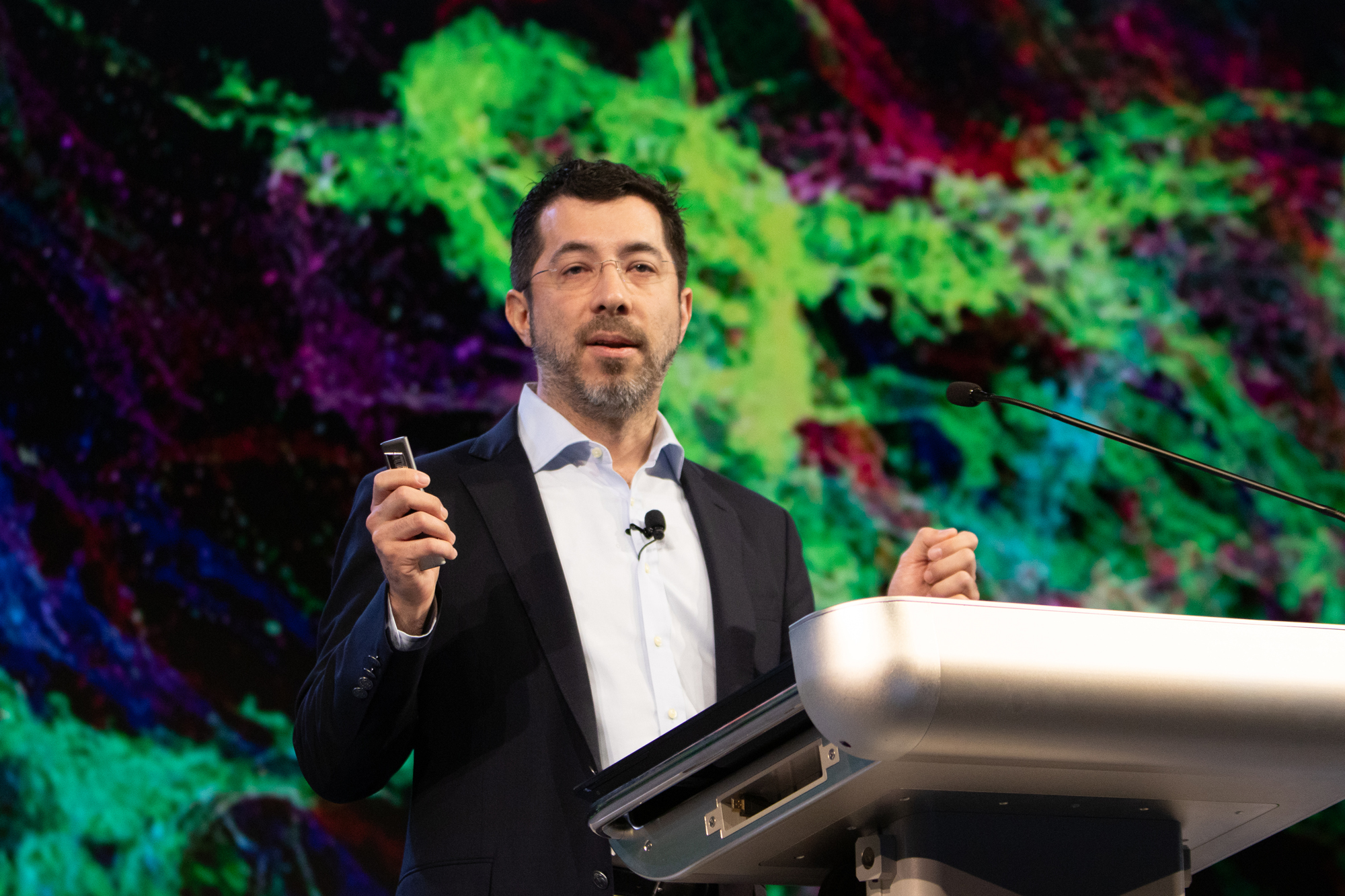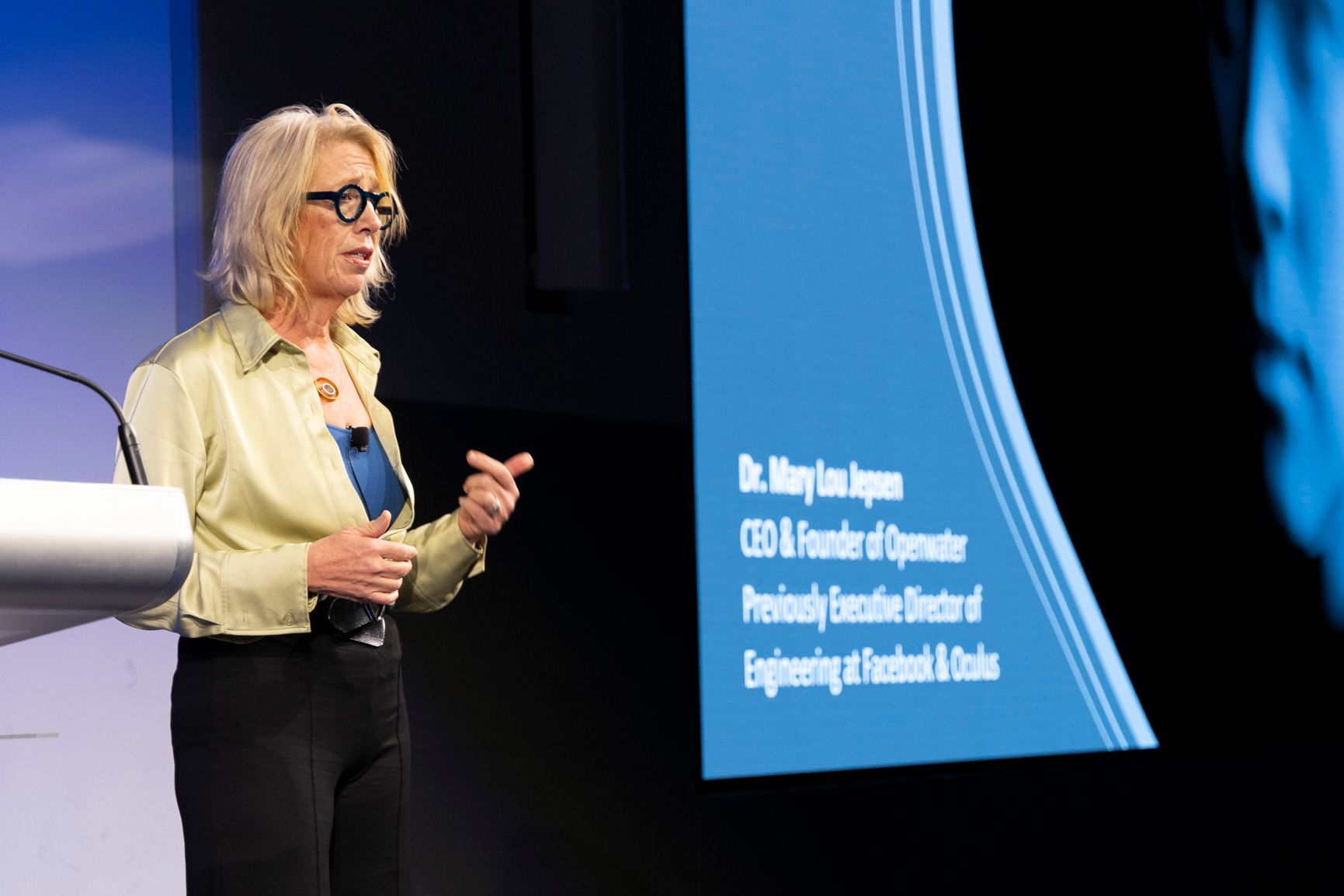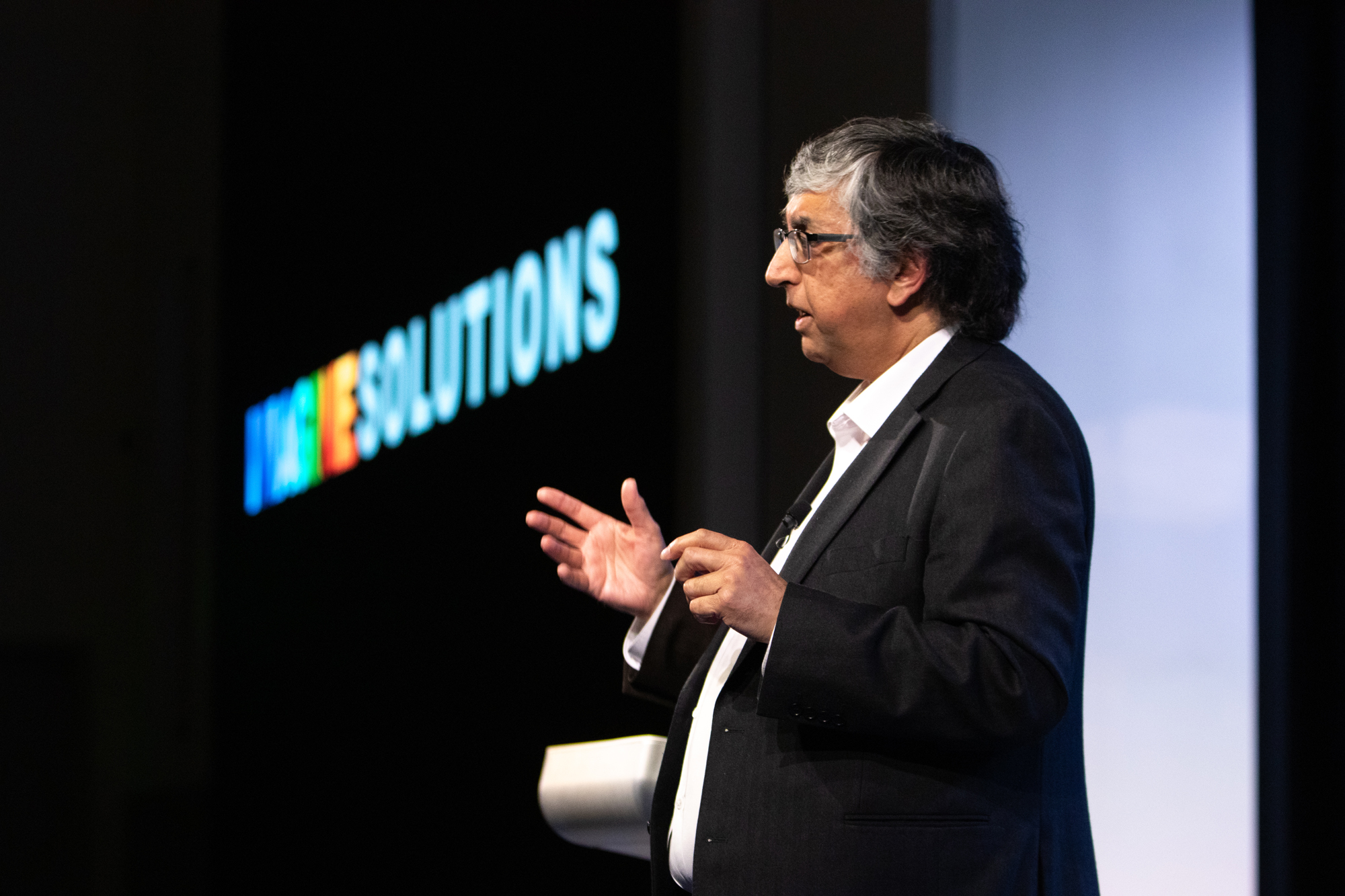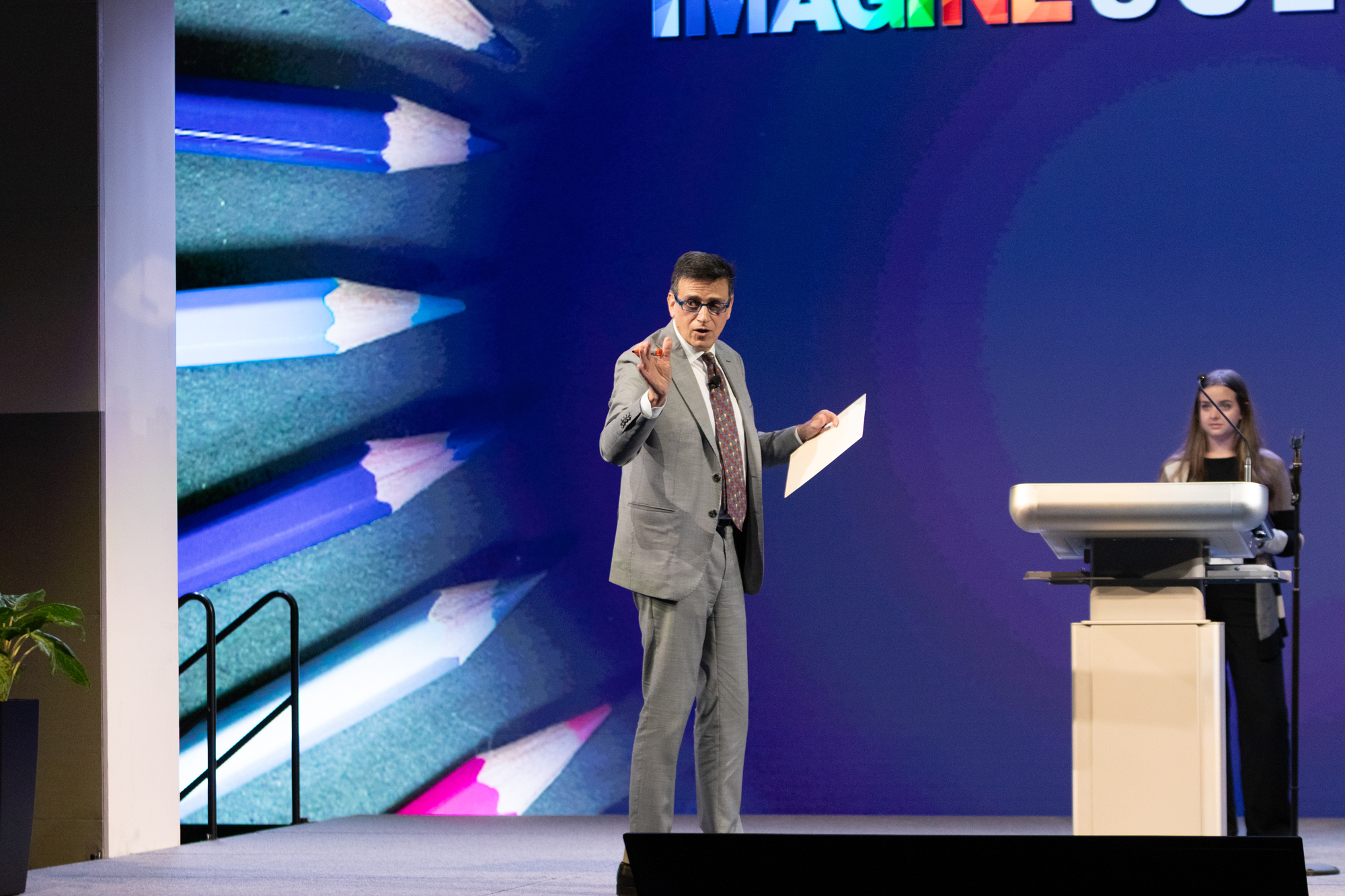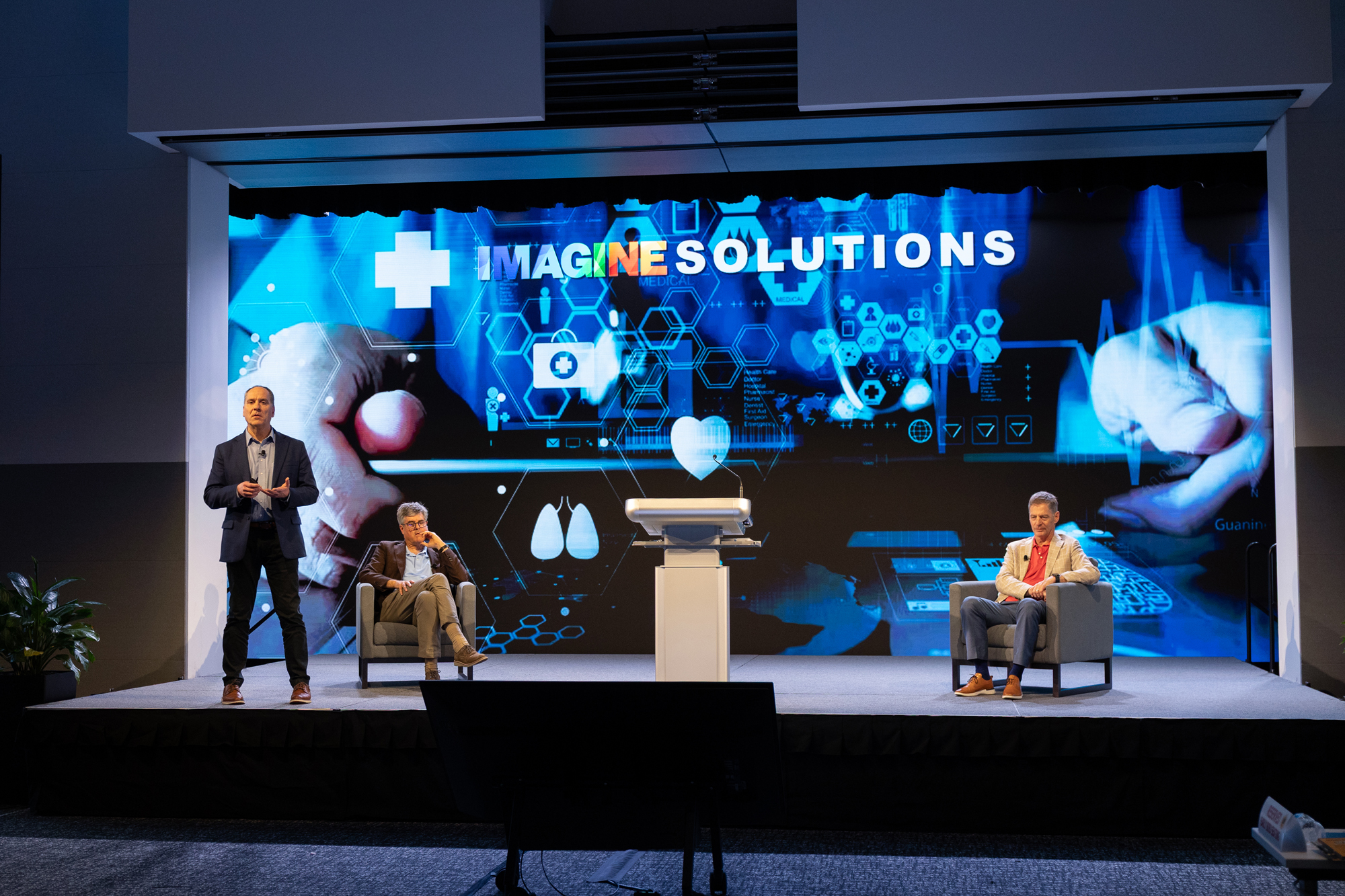The Greatest Scientific Breakthrough of 2022
00.00
[Music] [Music] on December 25th 2021 from French Guana in South America the James web Space Telescope was launched traveling a million miles to a precise location in outer space and then automatically unfolding as in a miracle a telescope that would change our knowledge of space and the great beyond it's my pleasure now to introduce John Mather Nobel Prize winner and the leader of the greatest scientific achievement in 2022 the development of the James web telescope please welcome John [Music] ma well good morning I can't see you but
01.00
I know you're there it's like stars in the daytime so thank you for inviting me to come I want to tell you the secrets of the universe some of them so the story I'm going to tell you is about the great James web Space Telescope uh named after the NASA second administrator James Webb who was the man who went to Jack Kennedy with a plan for Apollo he said we're going to go to the moon and we're going to do it not because it is easy but because it is hard and we're going to do that and the other things too so when I watch the videos I think oh my God what is impossible so we are here we are thinking about what is not impossible all the things we could imagine wanting to know we could know so here they are I'm going to tell you how we do it in astronomy this great telescope is an international project of NASA with European and Canadian space agencies it's taken 20,000 people to get it up there and it's working beautifully thanks to those professionals who made
02.02
it possible and thanks to the backings of our governments around the world to do it and it is available to every astronomer every scientist in the world you send us a proposal and we'll think about where to point the telescope based on your ideas so sorry for my voice but anyway there is the great golden hexagon in outer space it is 21 ft across that golden mirror and is unfolded after its launch because it's bigger than the rocket an incredible IND ing accomplishment and it just tells us that nothing is impossible if you can imagine it so imagine Solutions thank you so I want to tell you a little bit about why this is important to all of us so where do we come from uh I wanted to know that when I was little I still want to know what does we mean now it turns out um we're not just sort of um just entities we are made up of 100 billion nve cells trillion of other cells maybe
03.01
many trillions of bacteria and viruses in our bodies and they're all acting more or less independently but cooperating until they stop cooperating and then we go to St St Peter or whoever um so we can work on that question here as biologists and people do um there's a new perspective opening up where we recognize that who we are is actually not easily described but is based on information content on DNA on social structure on the organization of all those tiny entities but we astronomers we can work on the cosmic history uh what what did the atoms do and are we alone is there some other place not too far away or far away where there could be life elsewhere of course everybody wants to know um and right now we do not know of any neighbors but personally I think they are out there they may or may not be like us but who knows we have to find out so is life a miracle well for many centuries people thought so it
04.01
required divine intervention now scientists are coming to think well maybe not maybe it will always happen given a chance but how could we know we have to go look well how far can we go not very far to tell the truth uh we can get as far as Mars and we can take pictures though and we can travel the entire universe with our imagination so there we go so how did I get started in this this is I my my home when I was a child uh I grew up on this little farm in Far Northern New Jersey um and where my dad was a research scientist working on the genetics and feeding of dairy cows so I got my science start by reading books and thinking a lot about the great questions and I wanted to build telescopes so now I do so here is my first big project this was something I did for with NASA starting in 1974 right out of graduate school and this is a uh thing call the
05.01
cosmic background Explorer we measured the Big Bang we measured The Heat Of The Big Bang to see if was the same everywhere and it more is not quite and we measured the Spectrum to see if it's really as claimed the residue of the fliest moments of the universe so we started that knowing not not knowing how to do and by the way it was to follow on to a failed thesis project my failed thesis project in Berkeley did not work right the first time but these Professional Engineers made this thing work beautifully and within days we had the answer that we were hoping for the yes indeed the story of the expanded universe is confirmed so um here is the thing that made us most famous that's got on the front page of newspapers around the world this is the sky as seen if you could see with millimeter wavelengths so this is the picture of the universe as it was young when it was when it was young about 400,000 years old and this is where we should start to be able to calculate
06.01
what happened next so if you knew all the right equations of physics and how to know how to calculate you should be able to say from that grew the galaxies from this grew the stars from this grew the planets and places where people could live well that's a big project but we are working on it so um when Stephen Hawkings saw this picture he said that was the most important scientific discovery of the century if not of all time he had many reasons for that but I just say if we weren't if there were no spots in this map we would not exist so I guess it's important so I got to go see show my Spectrum many many thousands of times here I am getting my Nobel prize from the king of Sweden in 2006 so I showed that chart a lot so how you going to know if this story that we're telling is correct well you got to take pictures here's the great Hubble Space Telescope it's 33 years old will be 34 in April um and
07.02
when we launched it it wasn't working right either we had to send up astronauts to fix it uh and it's been serviced altogether five times which is a miracle in itself astronauts went up into space on the space shuttle um they got out in their space suits they did things they put in new equipment got back in their space shuttle and came home so that's a a miracle of its own uh and when they did that they said uh by the way we thought we were going to see see the first things happening in the universe after the big bang and now we can't see them we need a bigger better telescope so they read a little book a very poetic little book um called HST and Beyond and from that they said please build us another telescope which became the James web Space Telescope so here it is another picture of it it's uh here a few words to say what we've got on board we have instruments uh from around the world from Arizona from Europe from Canada we have a prime
08.01
contractor north of Gman near Los Angeles airport and Everywhere We Run the telescope from Baltimore the way we do the Hubble telescope and I'll show you in a few seconds uh what we have found out with it um but anyway um it went up as was mentioned on the European rocket um on Christmas morning 2021 so what did we find well uh why we build a telescope to pick up infrared light uh infrared light is the same as ordinary but longer wavelengths and so you can't see it with your eye but it tells us new things so why well here is a telescope picture from Hubble uh of the um a star being born from a cloud of dust and that's very interesting how how are stars formed from clouds of dust well you can't see it very well inside you can barely see that right in the middle there is a new star with jets coming up but if you uh could use the infrared light you'd see see the star uh much
09.01
better because infrared light can go around the dust grains and uh see inside the clouds so there's learning how our stars formed stars like the sun we see cool objects that are not warm enough to emit their own light um and when we look inside sometimes we see things we didn't expect this is the the debris of a star that's disintegrating as it's old stars come to an end when they're B burn up all their nuclear fuel inside and the sun will do that too in about 5 billion years U but don't worry it's a long time away um it's called a planetary nebula because it looks like a planet but it is not and if you get a magnified picture you will see inside there are actually more than one star inside and we see a different structure this whole amazing system has got five stars in it that are the cause of all this astonishing structure so uh um how do we interpret
10.01
this well very carefully we draw uh stories we we make computer models we simulate things in the computer just as you would do to predict the weather we say it was like this and that will be like that based on the equations of physics so here this third reason why we want to study infrared light uh we have the story that space is expanding or another way of saying it is distant objects are running away from us at immense speeds which means we we receive light uh waves that come less frequently because they're running away and uh that means we see we need infrared light to pick up distant galaxies so here's the first thing we released in in July of 2022 um a picture uh we were very very very proud of um and I went down to the White House for this event uh we see if three things in here three kinds of things the stars are the ones with the six spikes sticking out of them and we know about them so that it's not so
11.01
exciting right in the middle are some extraordinary galaxies and as you know a galaxy has hundreds of Billion Stars orbiting around a Common Center and there are so many in there so much material in those bright fuzzy galaxies that they can actually Bend space Einstein told us that would happen and so we say okay thank you very much space is bent that means it has the ability to focus light from even more distant objects so you can see in this picture curved pink objects which are highly magnified and distorted images of extremely extremely distant galaxies so we're learning about the growth of the very first objects from The Big Bang oh my gosh what a surprise to be able to see all those details so astronomers are getting their wish and we're helping us get our public wish of telling our own story how did we get here from The Big Bang here's one of our surprises
12.02
galaxies are not round when they're young this is some of the most distant objects we can see and they are long and stringy and well maybe we should be surprised maybe we shouldn't be but we did not expect it so I show it to you because it's is a work in progress please explain that picture here's another beautiful picture this is a ordinary spiral galaxy you would have seen uh beautiful pictures like the web telescope sorry like the old pictures of spiral galaxies now this one we can see in infrared has a hole in it the holes or many holes in here are due to the formation of new stars when they're born they some of them blow up in a very big hurry liberate huge amounts of energy and they bow holes in the Galaxy around them so that's what you see here in the lower right corner and everywhere so Galaxies have holes in them because of gas pressure is the same way that sponges have holes in them when
13.00
they are made this is a picture we call the Pillars of Creation because it looks like that um and and actually now we can see inside stars are being born there are hundreds and hundreds of them being born inside this Cloud you can see there's a wind blowing through space uh just like that gas pressure I was telling you about before wind is blowing from the upper right to the lower left and you can see the wind blowing around the the objects in there and even see this sort of reddish object in the right hand side where new stars are being born as we speak so these beautiful pictures need interpretation by scientist to say how is it really working but this is getting on to really really understanding the details of our own Origins because stars like the sun are being born in there here is one uh we're seeing a new solar system being born you know here in our own solar system all the planets move around in a single plane called the eclipse IC plane that's
14.00
where all of your astrological constellations are um if you were in this new system being born the star is hidden right there in the center in the mid middle of that hamburger bun and you can't see the star but you can see the light coming up and down um and if you were to come back in a few hundred thousand years you would be able to see the planets and the dust would be all gone so a new star with planets hopefully some of them might be like the our own planetary system but on the other hand all despite the fact that we've been looking for a long time we have not seen any other solar systems like ours with four little planets in the middle then a gap then four big planets outside so unknown how many planets are there that are like ours but maybe maybe a lot this is a demonstration that we don't know what's going on pairs of Jupiters have been found out there orbing around each other in the Orion Nebula a place where you can see with with your own eyes on a
15.00
good dark night this is the Middle star in the sword of constellation of Orion and we are seeing amazing new things being born in there okay on the next slide I want to show you how that we find out about planets and their atmospheres uh this is how we see if planets have atmospheres uh when a planet go goes in front of its star some of the Starlight might go through the atmosphere of its planet and we'd see the difference so we have measured um that watch planets have atmosph and small ones don't so far and we've seen at least six different chemical items in the atmospheres of those planets so far no little Earths are out there but we didn't yet look in the right place we know where to look but we can't do it yet so okay um now I just want to show you a little bit of local stories here's good old Jupiter and the Great Red Spot is there but it's not red because you can't see infrared colors with your own eyes um anyway it's all the big planets
16.00
have have rings around them and this is a demonstration that um that Jupiter does too we can watch the storm so we can think about the weather on Jupiter and try to understand how the Big Planets work here is one of the places we're going to go visit you see in the upper right corner is a little helicopter called dragonfly we're going to land out there on satellite Titan which orbits around the planet Saturn this is a fascinating place it's a satellite that has an atmosphere of its own enough to fly a helicopter it's cold out there and there is there are lakes and rivers and rain and clouds and fog and they're all made out of hydrocarbons like ethane and methane and uh it's a place where you could imagine maybe there's another system of Life Life as we do not know it so we're going to go there and look and see what can we pick up some samples can we look at them can we examine the surface uh which is by the way M made
17.00
out of ice under the ice is an ocean probably so is it possible for life to be based on another system we will find out here's a beautiful picture of this of planet Uranus uh Uranus is the only planet in the solar system where the spin axis is in the plane of the orbit so it means we get to look down on the pole of the planet so there it is looking beautiful and and uh as all the outer planets it has rings it has many many satellites these are named after Shakespearean characters and one of these days we'll understand how the chemistry of this system works so why do you want to know that well it's chemistry as it is not done here it's informative about how to think about uh systems as large as the Earth and clearly has some effect on our understanding of global climate change global warming all the things that are happening here on Earth and we can test our understanding on things that are a little different way out there in the
18.01
solar system so just to wrap up here here is the way that you can follow us uh on the web there are websites all the over which report our results this week uh there are new results that I get about how we are beginning to understand some of those Mysteries that they showed you so thank you very much for the opportunity to tell you this story and there is much more to come after this we are planning new telescopes to go up in 202 7 eventually in 20 40 something a telescope capable of seeing are there little planets out there that are like Earth orbiting around stars like the Sun so nothing is impossible so let's go thank [Applause] [Music] you

